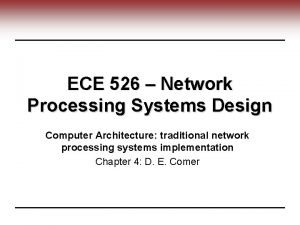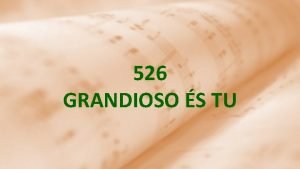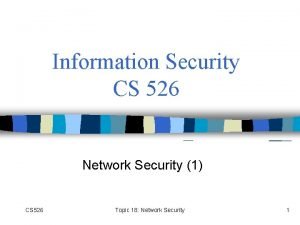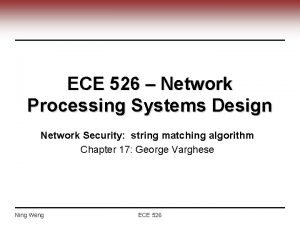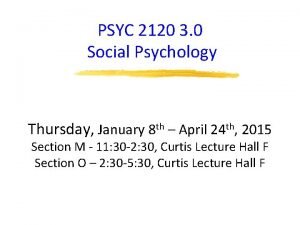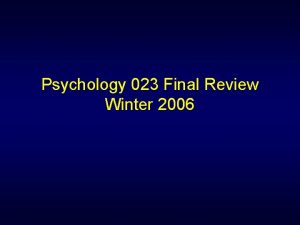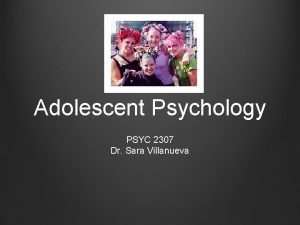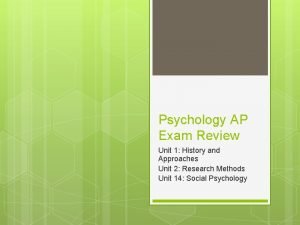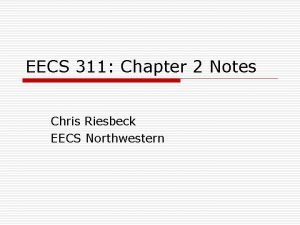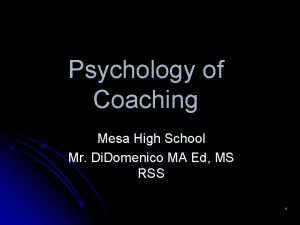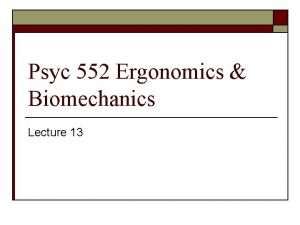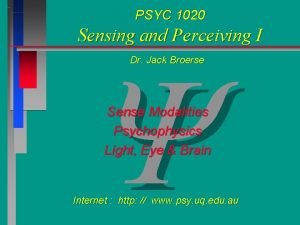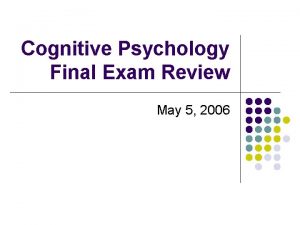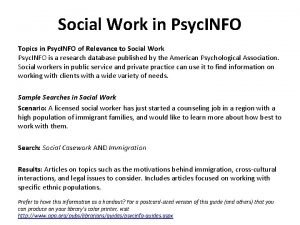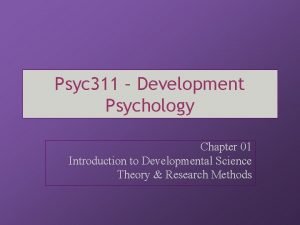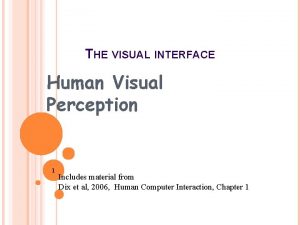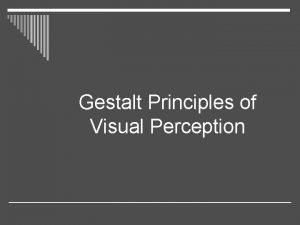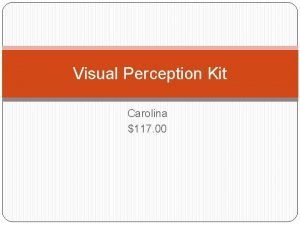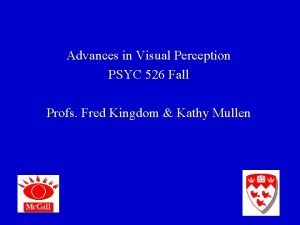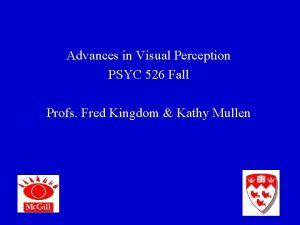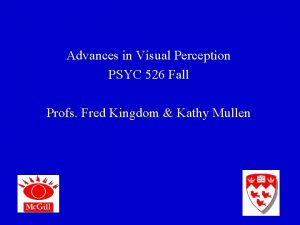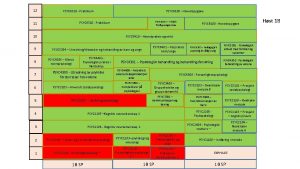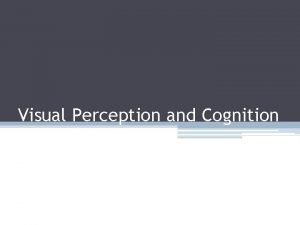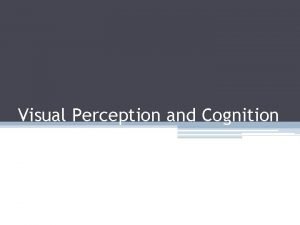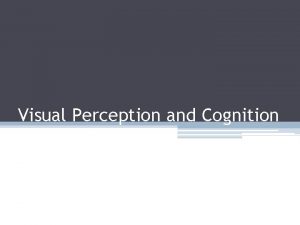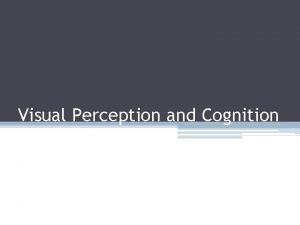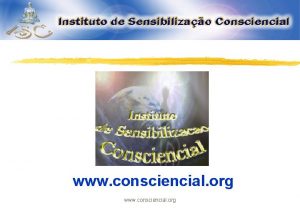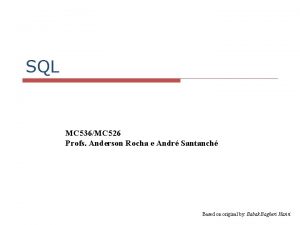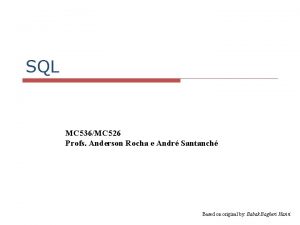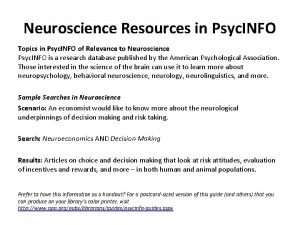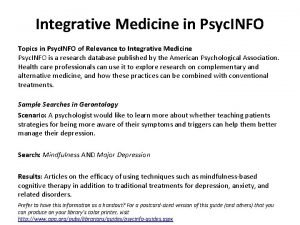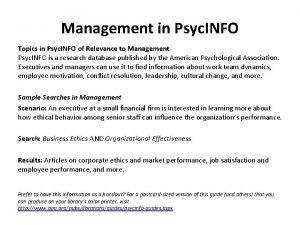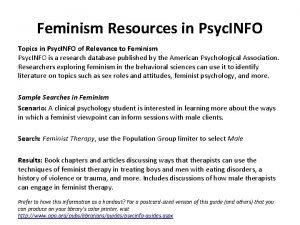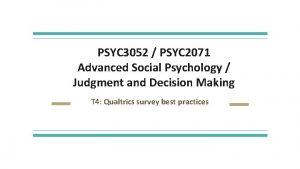Advances in Visual Perception PSYC 526 Fall Profs





























- Slides: 29

Advances in Visual Perception PSYC 526 Fall Profs. Fred Kingdom & Kathy Mullen

Techniques for studying biological vision q Psychophysics q Neurophysiology q Brain Imaging


Copyright © 2002 Wadsworth Group. Wadsworth is an imprint of the Wadsworth Group, a division of Thomson Learning Page 40 (21) Methods for recording activity of a neuron

Courtesy of David Hubel, supplied by Tony Movshon, New York University

Courtesy of Geoff Boynton, Salk Institute, California

Courtesy of Geoff Boynton, Salk Institute, California

Courtesy of Geoff Boynton, Salk Institute, California

Lecture 1 An EXCEEDINGLY Brief History of Vision !

Empedocles (492 -432 BC)

Galen (2 nd century AD)

Summary of Greek ideas q Eyes emitted rays of light q Objects were active agents in perception q Replicas, or images of the outside world are carried to the brain

Alhazen (965 -1039 AD)

Pin-hole camera Object Image


Descartes (1596 -1650)

Viewing the retinal image (Descartes)

Copyright © 2002 Wadsworth Group. Wadsworth is an imprint of the Wadsworth Group, a division of Thomson Learning Page 5 (26) René Descartes’ conception of brain and mind

The ‘homunculus fallacy’

Newton (1642 -1727)

Copyright © 2002 Wadsworth Group. Wadsworth is an imprint of the Wadsworth Group, a division of Thomson Learning Page 157 (38) A beam of light separated into its Wavelengths

By the end of the renaissance……. q The lens in the eye produced the retinal image q A “sensorium” (or ‘homunculus’) in the head was able to see the contents of the image q The world we perceive is not a simple copy of physical reality

Helmholtz (1821 -1894)

Simultaneous colour contrast Simultaneous brightness contrast


What is the brain assuming here ?

By the end of the 19 th century…. . q Different sensations (pain, touch, smell, sight, hearing) are mediated by different physiological structures in the nervous system q Within a modality (e. g. sight) different nerve fibres respond selectively to different stimuli (e. g. different ranges of wavelength) q Perception is affected by in-built knowledge of the world, i. e. is not a simple transformation of the raw sensory input


 Energy profs
Energy profs What is the value of the underlined digit 526
What is the value of the underlined digit 526 Ece 526
Ece 526 How was byzantium a continuation of the roman empire?
How was byzantium a continuation of the roman empire? 526
526 Network systems design using network processors
Network systems design using network processors Brb cm 50
Brb cm 50 Network security process
Network security process Byzantine empire 526 ce
Byzantine empire 526 ce Ece 526
Ece 526 Psyc 2120
Psyc 2120 Psyc 311 study guide
Psyc 311 study guide Sfu library databases
Sfu library databases Gratification disorder
Gratification disorder Psyc 2307
Psyc 2307 Psyc info
Psyc info Psyc 1504 final exam
Psyc 1504 final exam Chris riesbeck
Chris riesbeck Psyc info
Psyc info Psyc 1504 learning journal unit 1
Psyc 1504 learning journal unit 1 Physiology ergonomics
Physiology ergonomics Psyc 1020
Psyc 1020 Psyc 1504 final exam
Psyc 1504 final exam Psyc info
Psyc info Psyc 311
Psyc 311 Perception
Perception Reversible figure ground relationship
Reversible figure ground relationship Gestalt principles figure ground
Gestalt principles figure ground Carolina visual perception kit
Carolina visual perception kit Recent advances in dental ceramics
Recent advances in dental ceramics


